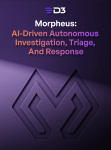Fresh from our recent Morpheus AI workshop, D3 Security leaders Philip Beck (Director of Cybersecurity Sales Engineering) and Pierre Noujeim (Director of Cyber Security Services) gave viewers a look at how teams can fully automate their tier 1 and tier 2 SOC tasks at scale with AI-driven autonomous SOC technology.

In the workshop, we asked 100+ security leaders to rank their biggest obstacles to improving SOC efficiency. The top five responses were:
- Response playbook creation and maintenance - 57 %
- Tool integration challenges - 48 %
- Alert prioritization - 39 %
- Budget constraints - 17 %
- Staff burnout & turnover - 17 %
These interconnected issues plague most SOCs today. The avalanche of false positive alerts, the sprawl of attack surfaces, and tight resources force an impossible trade‑off: Either burn out analysts chasing every alert or miss critical threats by being selective. D3’s Morpheus AI is an autonomous SOC solution that removes that trade‑off altogether. Here’s how:
Nightmare #1: Response Playbook Creation & Maintenance
The Pain
Playbooks written once rarely survive the next sprint. In our workshop, 57 % of security leaders admitted their teams struggle to keep response playbooks current, their top‑ranked pain point.
The Autonomous SOC Solution
AI-Generated, Context-Aware Playbooks: Morpheus auto-generates fully contextual playbooks the moment an alert arrives. Upon ingesting an alert, Morpheus extracts relevant Indicators of Attack (IOAs) and Indicators of Compromise (IoCs) and dynamically builds a context-aware investigation playbook. There’s no manual logic or endless steps required.

- Zero Maintenance Overhead: Morpheus’s AI scales effortlessly, with its AI-driven logic adapting instantly as threats evolve. This means no need to rebuild workflows or chain multiple steps for every new use case, eliminating the constant maintenance headache of traditional SOAR playbooks.
- Transparent Operations: While AI orchestrates, humans remain in control. Morpheus produces open YAML playbooks and logs, offering full visibility into AI actions and decisions, allowing for custom modification if needed.
Nightmare #2: Tool Integration Challenges
The Pain
Enterprises now juggle an average of 45 security tools in their stack. Native integrations only cover half, leaving manual API glue.
The Autonomous SOC Solution
Cross-Platform Integration: Morpheus seamlessly integrates with existing security infrastructure through over 800 ready-made integrations, covering SIEM, EDR, NDR, email security, cloud security, and more. This means no rip-and-replace is required; Morpheus sits on top of your existing tools and amplifies their capabilities.
Unified Alert Ingestion & Data Modeling: Morpheus ingests 100% of alerts from across the entire security stack, normalizing, de-duplicating, and enriching this data to create a unified data model perfect for AI-driven hyperautomation.
Stack-Aware Orchestration: It integrates smoothly with your existing EDR, email, or vulnerability scanners, enabling coordinated responses across multiple security tools from a single interface.
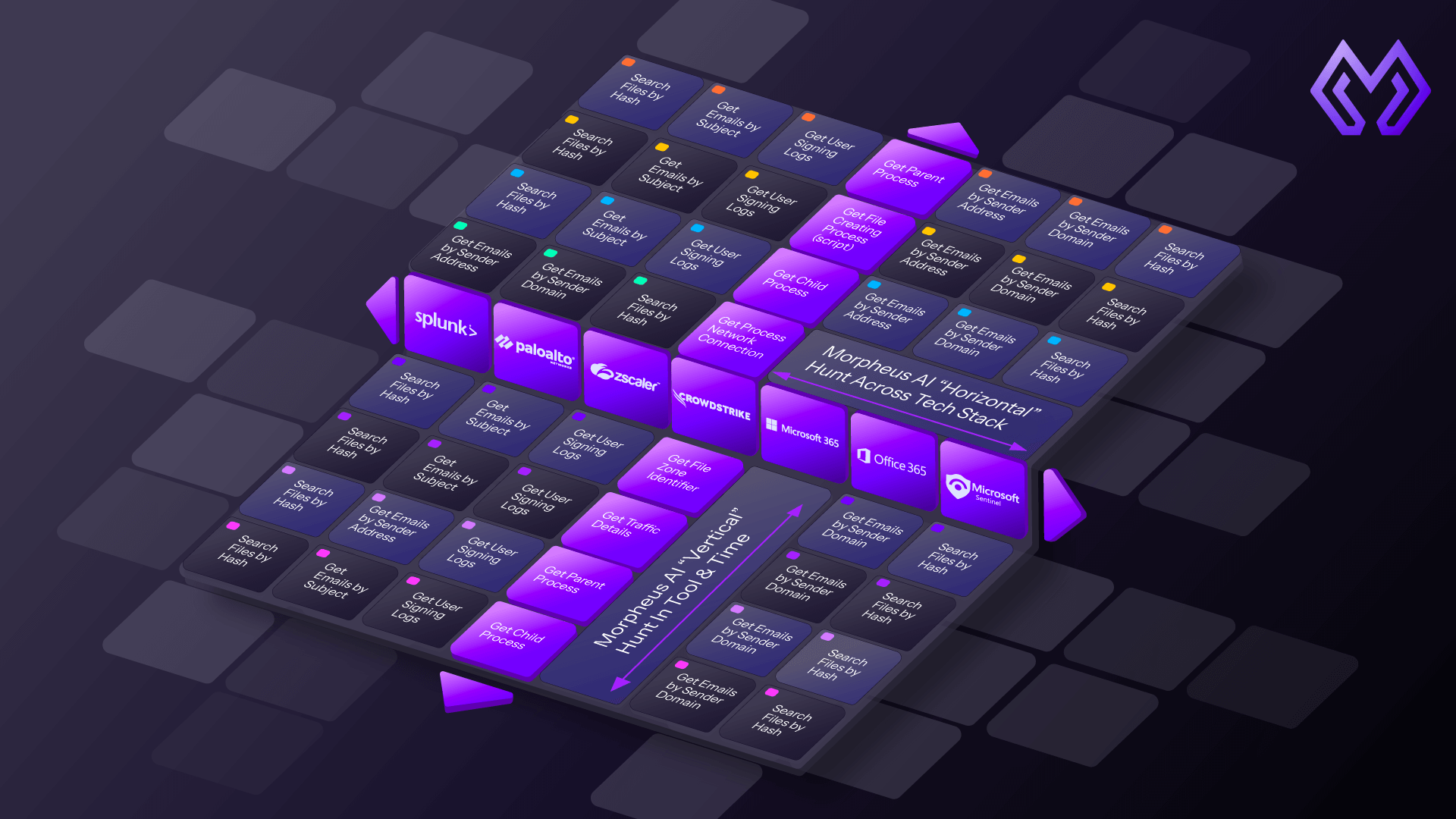
Nightmare #3: Alert Prioritization
The Pain
The typical SOC now handles 4000 + alerts daily.
The Autonomous SOC Solution
Autonomous Triage: Morpheus autonomously triages 95% of alerts in under 2 minutes.
Low-Fidelity to High-Value Conversion: It automatically merges low-quality alerts into robust, contextual incidents, filtering out false positives and benign noise to ensure analysts focus only on high-fidelity, high-confidence incidents.
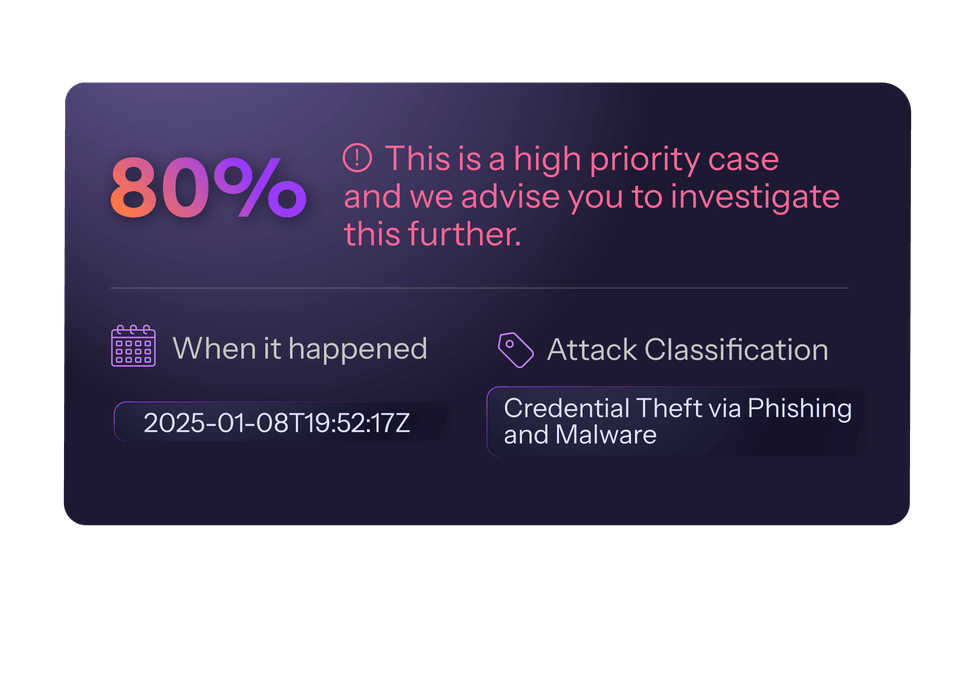
Incident Response Priority Score (IRPS): Morpheus calculates a cross-stack threat score, the IRPS, which considers impact, confidence, context, and mitigation. This dynamic re-prioritization helps analysts focus on the most urgent incidents first.
AI Summary and Prioritization: Morpheus provides an AI-driven summary of alerts, incorporating information from threat intelligence feeds and initial remediation actions, helping analysts understand and prioritize their work efficiently.
Use Case Snapshot – Large MSSP
Problem: 22,000 daily alerts from 19 customer tenants.
Result: Autonomous triage condensed those to 320 prioritized incidents; a 98.5 % reduction.
Nightmare #4: Budget Constraints
The Pain
Nearly one‑fifth of leaders in our workshop said budget ceilings block them from hiring analysts or buying the tooling they need.
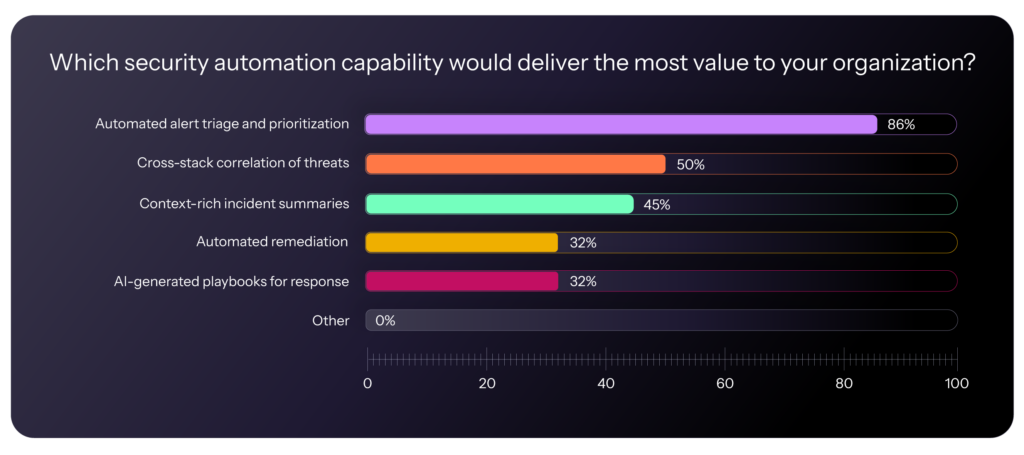
The Autonomous SOC Solution
- Full Automation of Tier 1 & 2 SOC Work: By fully automating tier 1 and 2 SOC tasks, Morpheus significantly reduces the manual effort and time spent on routine triage and initial investigation. This directly translates to cost savings in terms of analyst hours and resource allocation.
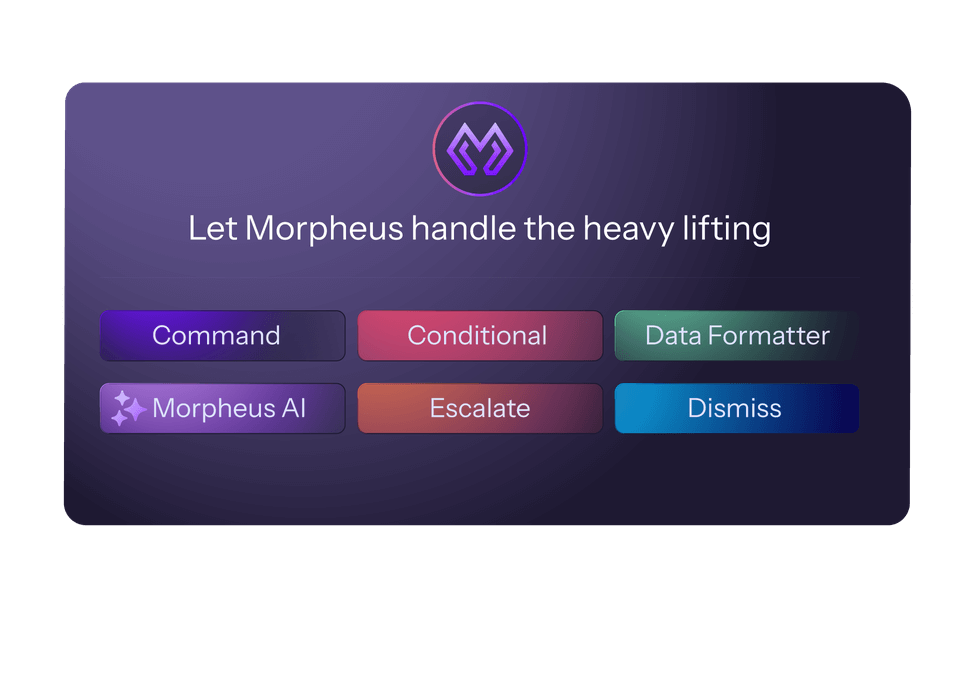
- No Rip-and-Replace: With its vendor-agnostic design and 800+ integrations, Morpheus enhances your existing security stack without requiring costly overhauls.
- Reduced Training Burden: Team members only need to learn one platform instead of dozens, simplifying onboarding and reducing training costs.
- Scalability Without Proportional Cost Increase: Automation allows SOCs to scale operations to support growing enterprises or new MSSP customers without a linear increase in staffing and associated costs.
Nightmare #5: Staff Burnout & Turnover
The Pain
Shift work, repetitive triage and staffing shortages keep average SOC analyst tenure just a little over two years.

The Autonomous SOC Solution
Eliminating Tedious Tasks: Morpheus automates repetitive tasks like hash verification, IP tracking, URL extraction, threat intelligence gathering, and reporting. This frees analysts from “swivel chair” analysis and allows them to focus on more engaging and higher-value work like actual threat analysis and proactive hunting.
Faster MTTD/MTTR: By automating initial investigation and response steps, Morpheus drastically moves the needle on SOC metrics related to speed and timeliness. For example it reduces Mean Time to Detect (MTTD) and Mean Time to Respond (MTTR), giving analysts a greater sense of efficacy.
Upskilling and Focus on Analysis: The autonomous SOC allows analysts to upskill with more time for decision-making and skill development. More experienced analysts (Tier 3+) are freed for proactive threat hunting and in-depth analysis.
Analyst-Centric Control: While Morpheus automates heavily, it keeps analysts in the loop with transparent YAML playbooks and human approval workflows for critical actions, ensuring they maintain control and trust in the system.
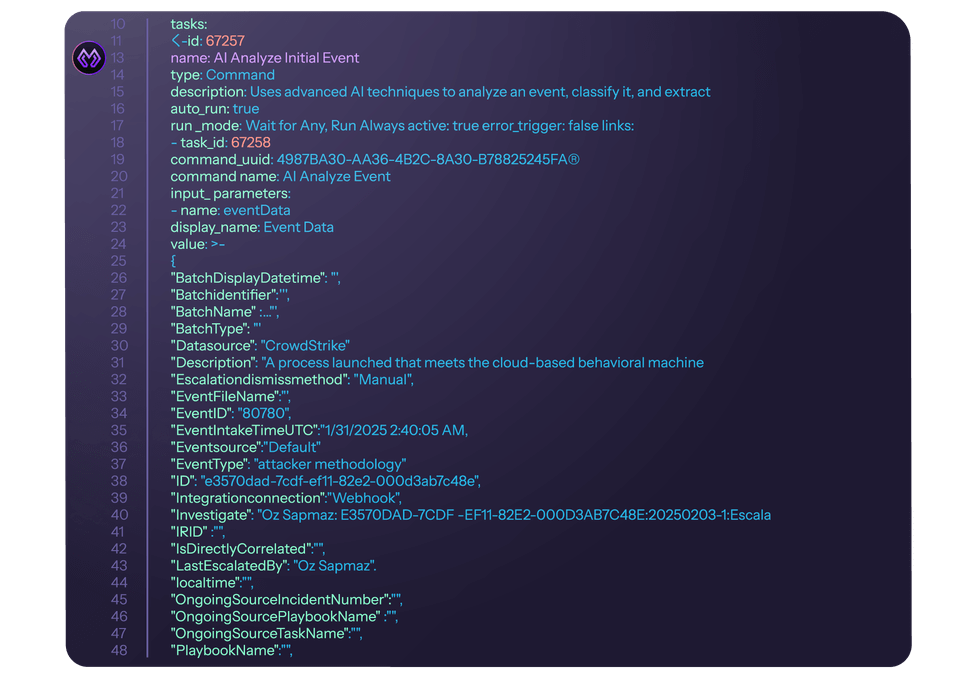
Key Takeaways on Morpheus AI (Share with Your Board)
- Autonomously reduce alert volumes by 98+ %.
- Response playbooks never fall out of date. AI writes and updates them in real-time.
- Response time shrinks from days to minutes.
- Analysts refocus on proactive threat hunting, slashing turnover.
Did you miss our last Morpheus AI workshop? We’re hosting it again at a time that’s more convenient for Northern Europe. Stay tuned, or contact us for a personalized demo.

